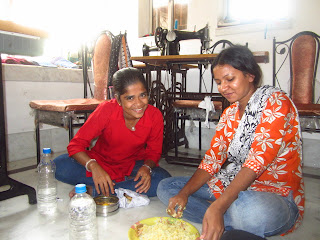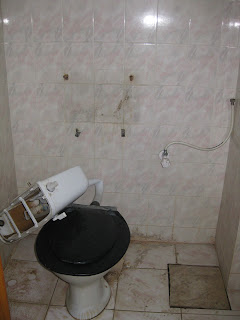By Lindsay
So I’ve just had a major eye opener. And it was expected. Yet it was harder to see than I thought it would be. Let me explain.
Last weekend we travelled to the Sunderbans, which is the rural region located in the Ganges River Delta just south of Kolkata. The Sunderbans is comprised of a few hundred small islands, some inhabited some not. The villages in the Sunderbans lack electricity and running water, and many of the villages were completely devastated by Cyclone Aila in 2009. The Sunderbans is also home to the world famous Bengal Tiger, which we spent the weekend diligently searching for, but despite our efforts we failed to see one.
Even though we didn’t see a tiger, we did see something else amazing! Our lost stop for the weekend was at a village where Destiny Reflection sponsors a Coaching Center (like a tutoring center). It was a Sunday, so the kids specifically came to the center that day to see us. They sang us songs and performed skits for us, and then we played soccer and Duck Duck Goose, and a stand-up/sit-down game that left me realizing just how out of shape I am. Haha. Anyways, while we were playing, Dr. Ro was talking with the teacher. Here are some facts:
- Girls in the village are married between the age of 12 and 17. Maximum (MAXIMUM!) age for a girl to get married is 17.
- Girls between 12 and 15 are often sent to the city to make money doing “domestic work”.
- The mother’s of the children attend the Coaching Center are likely younger that I am.
I would like to focus on the second point. The people in the village often send their girls to Kolkata to earn money for the family doing domestic work, such as working as a maid or a cook. A small percentage of those girls may actually be cooking and cleaning and earning an honest living (though I feel like no child should have to earn an honest living at age 12), but the reality is that most of these girls have been sold. Sold. Sold for less than 1000 rupees (~$20 Cdn) into the Kolkata sex trade. But, even that is uncertain. Who can say if these girls are even in Kolkata? It’s likely that they have been sent across the country to Mumbai or over the border to Bangladesh.
So I’ve spent most of the week processing this reality, but there was still a bit of a disconnect until tonight.
This afternoon, we treated all women from Destiny to a Bollywood movie. This was our first Bollywood movie experience in the cinema, and we had a great time! It was so different to the Canadian movie experience. The cinema looked more like the Vogue Theatre in downtown Vancouver than a movie theatre, and everyone cheered and clapped and laughed through the whole movie. People were answering their phones in the middle of the movie, and true to Bengali culture, half the theatre showed up late. The whole movie was in Hindi, so of course I didn’t understand anything. However, when I laughed at something I did get or the pure cheesiness of the movie, the girl sitting beside me kept laughing at me laughing at the movie. Oh man, hilarious!
After the movie one young lady from Destiny (who for our purposes I will call Sarah) was unsure how to bus to her home in Kidderpore from Gariahat, so Martyna and I offered to taxi with her to her house, and then take a cab back to Gariahat. When I offered to accompany Sarah I knew that Kidderpore is one of Kolkata’s red-light districts, so I had an idea of the types of things I would see going there after dark. However, I can say that seeing those things with my own eyes hit me harder than expected.
We were driving in the taxi when we turned off the main road into the neighbourhood. First we passed a number of smaller market-type shops and grocers. Perfectly normal. Then came the brothels. They were generally indistinguishable from regular homes, but in front of each one was a line-up of young women. I didn’t see any that looked as young as 12, but I would say that the large majority of the women I saw were younger than I am. And there they were with their make-up and their jewellery and their tight-fitting clothing just waiting. Waiting for some disgusting pig of a man to choose her, take her inside, and do the unimaginable. And as soon as the first is finished, out she would be again waiting in the line. Can you imagine standing in a line waiting to be repeatedly raped night after night?
This is the reality of Kidderpore.
After passing a number of brothels we turned a corner and drove a little ways and dropped Sarah off at her home. So here is Sarah, a beautiful young lady living right smack in the middle of Kidderpore. Thanks to Destiny Reflection, Sarah is not one of the young women waiting in line, and I pray that she never will be.
It was in the taxi home when the reality of the situation really hit me. Those young women standing in line, those are the young women missing from the village in the Sunderbans we visited last week. There they were - the missing young women - right in front of me. So much for domestic work...
And now I am sitting comfortably in Debjani’s beautiful home writing this blog post to the world, mostly as a way for me to process and explain to you the things I have just seen. Now my heart is breaking and I am crying and I am left wondering what can I possibly do to change the reality of Kidderpore?






































